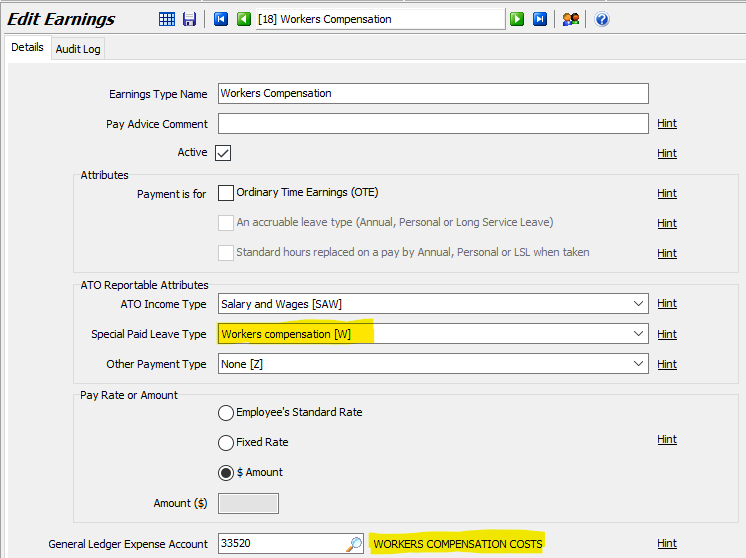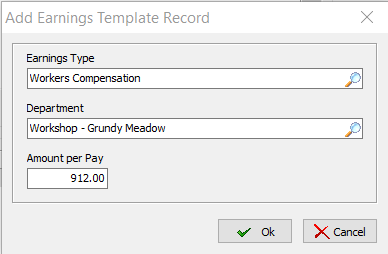Workers' compensation is a form of insurance payment to employees if they are injured at work or become sick due to their work.
Workers' compensation includes payments to employees to cover their:
- Wages while they're not fit for work.
- Medical expenses and rehabilitation.
Employers in each state or territory have to take out workers' compensation insurance to cover themselves and their employees.
Workers' compensation is governed by individual states and territories, and isn't an area that we can help with.
Each state and territory has their own regulator that administers and gives advice on workers' compensation.
Payment of Workers' Compensation
The amount of money paid to employees on workers' compensation will depend on the state or territory.
The amount paid to an employee is an insurance payment and not a wage. The employee is paid:
- Directly by the insurer,
- From the insurer through the employer or,
- By the workers' compensation regulator.
If the payments are made through the employer they must be included in the payroll so that they are included on Pay Advices and on the employee's annual Payment Summary (see setup details below).
Accident Pay
Some awards have entitlements to accident pay for employees on workers' compensation. Accident pay is the difference between what an employee would normally get paid and the amount they get paid from workers' compensation. It's paid by the employer.
Leave and Workers' Compensation
Employees on workers' compensation can take unpaid parental leave if they're eligible. Go to Maternity and parental leave to find out who is eligible for parental leave.
If it's allowed under the state or territory workers' compensation legislation, employees can take or accrue:
- Annual leave.
- Personal leave.
- Long service leave.
Contact the relevant workers' compensation regulator to find out if it's allowed in your state or territory.
Overtime and Allowances
If necessary, contact the relevant workers' compensation regulator to determine whether these are to be included in the calculation of the Workers Compensation payments.
Superannuation and Workers' Compensation
Although Superannuation Guarantee (SG) contributions are generally not payable while an employee is on workers compensation, there are exceptions.
You need to refer to the relevant modern award or enterprise agreement, which may contain provisions more beneficial to the employee than the provisions under SG legislation particularly for a period when an employee is absent on workers compensation.
How to Set Up Workers Compensation in Marlin HR
All payments you make to an employee must be processed through Marlin HR so that they are included on Payment Advices and in the employee's annual Payment Summary.
Leave Accruals
If you are advised that the employee is entitled to continue accruing leave whilst receiving Workers Compensation, leave the accruals setup as it is. However, if the employee is not entitled to accrue leave you will need to zero the annual accrual figure for the time being:
- In Employee Maintenance open the employee and select the Entitlements tab.
- Open each Leave Type and change the Annual Entitlement figure to 0.
This will not impact the employee's current leave balances but will prevent them from accruing more leave each time they are included on a pay run (remember to change the Annual Entitlement figure back if/when the employee returns to work)
Earnings Type for Workers Compensation
You will be advised either to pay the employee a specific dollar amount per pay or to pay him a specific percentage of his normal pay.
Dependent upon enterprise agreements, awards, which state of Australia, and other circumstances the employee's "normal pay" may be deemed to include some or all of the following:
- Standard Hours payment.
- Time & Half Hours payment.
- Double Time Hours payment.
- Allowances payments.
Rather than create multiple new Earnings types, each applying a certain percentage of the employee's normal rate, it is simpler and cleaner to create a single Earnings Type called Workers Compensation and use this to enter the total payment due to the employee each pay period.
Select System > Earnings and click on the Add icon.
Enter the required information as shown below and click on the Save icon.

You can select your Salaries & Wages expense account if you don't have a Workers Compensation code.
Do not tick the Ordinary Time Earnings (OTE) checkbox unless the employee is entitled to Super on the entire Workers Compensation payment.
Earnings Type for Accident Pay
If you are obliged to pay Accident Pay (see above), we suggest you create another Earnings Type that is identical to the one above for Workers Compensation but called Accident Pay.
Employee Maintenance
You can now add the new Earnings Type to the employee in Employee Maintenance (this is optional but will save you having to manually add it from the Earnings Type list on each payrun).
- In Employee Maintenance select the Pay Details tab.
- In the Recurring Earnings section, add the new Earnings Type and enter the dollar amount to be paid.

You might want to set the other Earnings types to zero so they won't be paid during the workers compensation period.

How to Process a Payrun for Workers' Compensation in Marlin HR
Include the employee on each Normal Pay with everyone else.

Ensure that the Earnings for Workers Compensation has been brought in from the Recurring Earnings section in Employee Maintenance (or add it manually) and that all other earnings types are zero if not being paid.
Complete the payrun as normal.
How to Process Workers Compensation Reimbursement
Periodically you will receive the money to cover the workers compensation payments that you make to the employee. This requires no processing in Marlin HR but will need to be processed in Marlin GTX.
Each time you finalise a payrun that includes a Workers Compensation payment to an employee, the payrun journal debits the amount to the expense account you selected when creating the Workers Compensation Allowance (see above).
You will likely have selected a Workers Compensation expense account or your Salaries & Wages expense account.
The reimbursement you receive will offset that expense and therefore needs to be applied to the same expense code.
To do this, enter a journal that DEBITS the amount to Bank and CREDITS the amount to the Workers Compensation expense account (or Salaries & Wages expense account).
Or, if you prefer, enter a Cashbook entry to receipt the payment and post it to the Workers Compensation expense account (or Salaries & Wages expense account).

